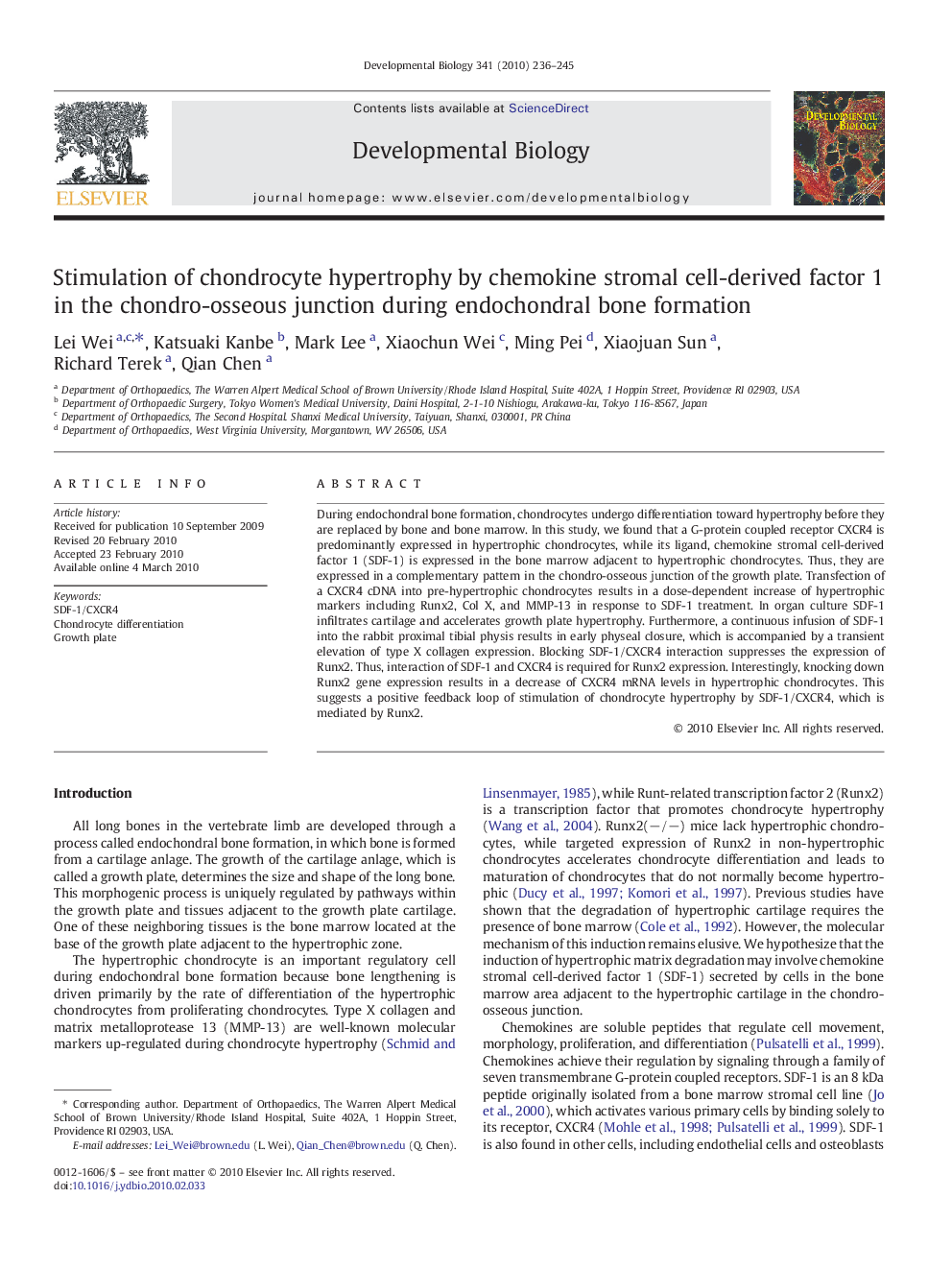| Article ID | Journal | Published Year | Pages | File Type |
|---|---|---|---|---|
| 2173961 | Developmental Biology | 2010 | 10 Pages |
During endochondral bone formation, chondrocytes undergo differentiation toward hypertrophy before they are replaced by bone and bone marrow. In this study, we found that a G-protein coupled receptor CXCR4 is predominantly expressed in hypertrophic chondrocytes, while its ligand, chemokine stromal cell-derived factor 1 (SDF-1) is expressed in the bone marrow adjacent to hypertrophic chondrocytes. Thus, they are expressed in a complementary pattern in the chondro-osseous junction of the growth plate. Transfection of a CXCR4 cDNA into pre-hypertrophic chondrocytes results in a dose-dependent increase of hypertrophic markers including Runx2, Col X, and MMP-13 in response to SDF-1 treatment. In organ culture SDF-1 infiltrates cartilage and accelerates growth plate hypertrophy. Furthermore, a continuous infusion of SDF-1 into the rabbit proximal tibial physis results in early physeal closure, which is accompanied by a transient elevation of type X collagen expression. Blocking SDF-1/CXCR4 interaction suppresses the expression of Runx2. Thus, interaction of SDF-1 and CXCR4 is required for Runx2 expression. Interestingly, knocking down Runx2 gene expression results in a decrease of CXCR4 mRNA levels in hypertrophic chondrocytes. This suggests a positive feedback loop of stimulation of chondrocyte hypertrophy by SDF-1/CXCR4, which is mediated by Runx2.
